Dove Lamp repair - 3D Printer Project
2018-04-11
Lynn has an original PAF Studio Dove Lamp designed by Mario Barbaglia and Marco Colombo. Designed and built in Italy starting around 1979 or early 1980's, this lamp is a beautiful example of well executed modern design. It also was the subject of litigation over the theft of the design by a Taiwanese company as described in A Case History of Industrial Design Success: The Dove Lamp.
A few years ago Lynn's lamp began to degrade. The lid began to detach from the base and the support arm began to come loose. Eventually it came apart. I put the lamp into storage and thought off and on about how to repair it. The ultimate solution was to design and build a completely new base.
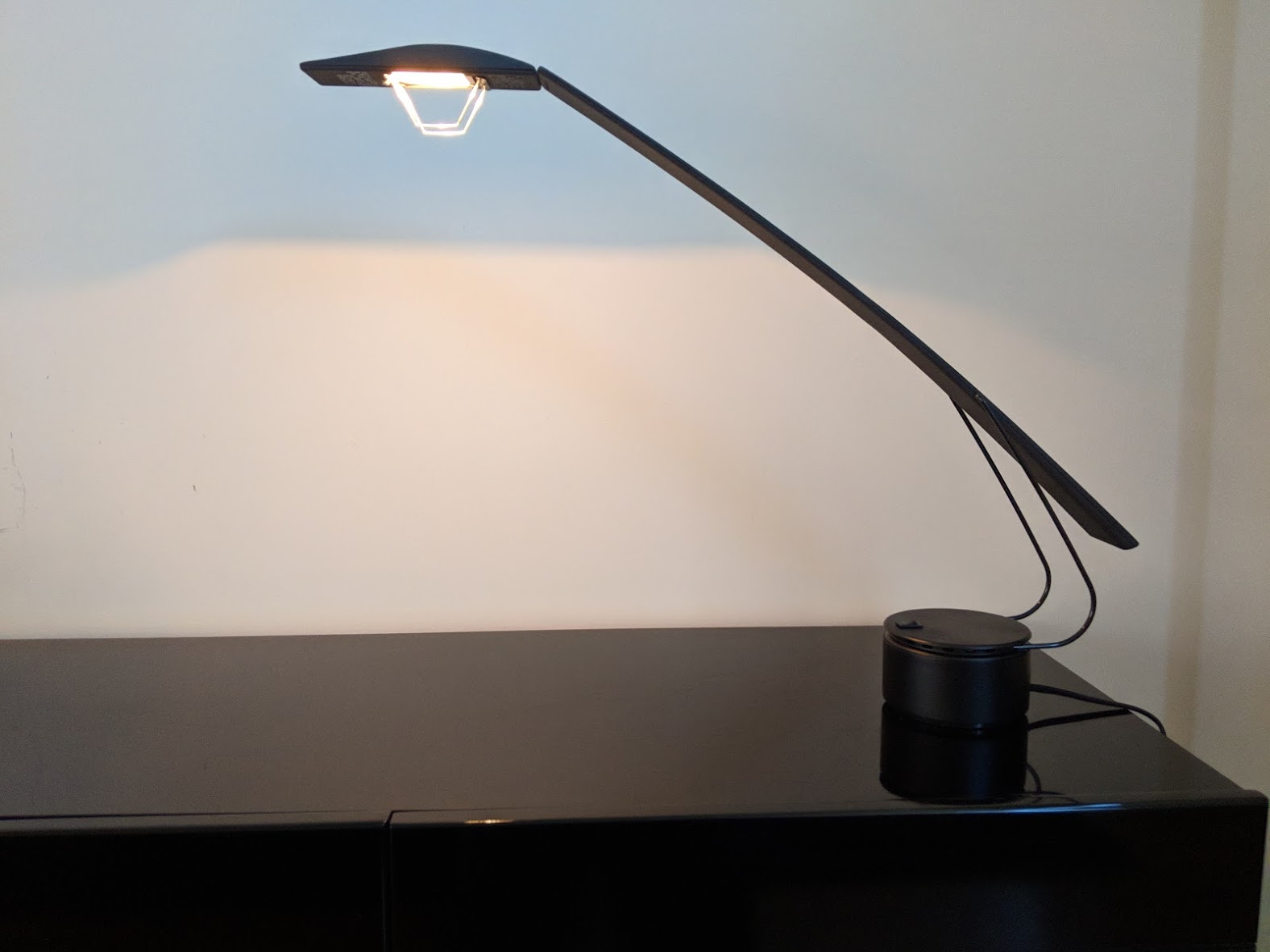 Completed project. Lamp fully assembled with sanded and finished 3D printed base.
Completed project. Lamp fully assembled with sanded and finished 3D printed base.
The lamp base is a hard plastic. The internals primarily consisted of a transformer with 120v input and 12v A/C output. Over time, the plastic deteriorated and broke in several key places and the lamp became unusable. Reluctant to dispose of such a classic piece of design, we kept all the parts and I occasionally thought about how I might repair the base. None of the ideas I had felt really acceptable, because they would all have marred the appearance in some way. Within the last year, I purchased a Lulzbot 3D printer and started learning how to design 3D parts and produce them. This eventually breathed new life into the idea of repairing the Dove lamp.
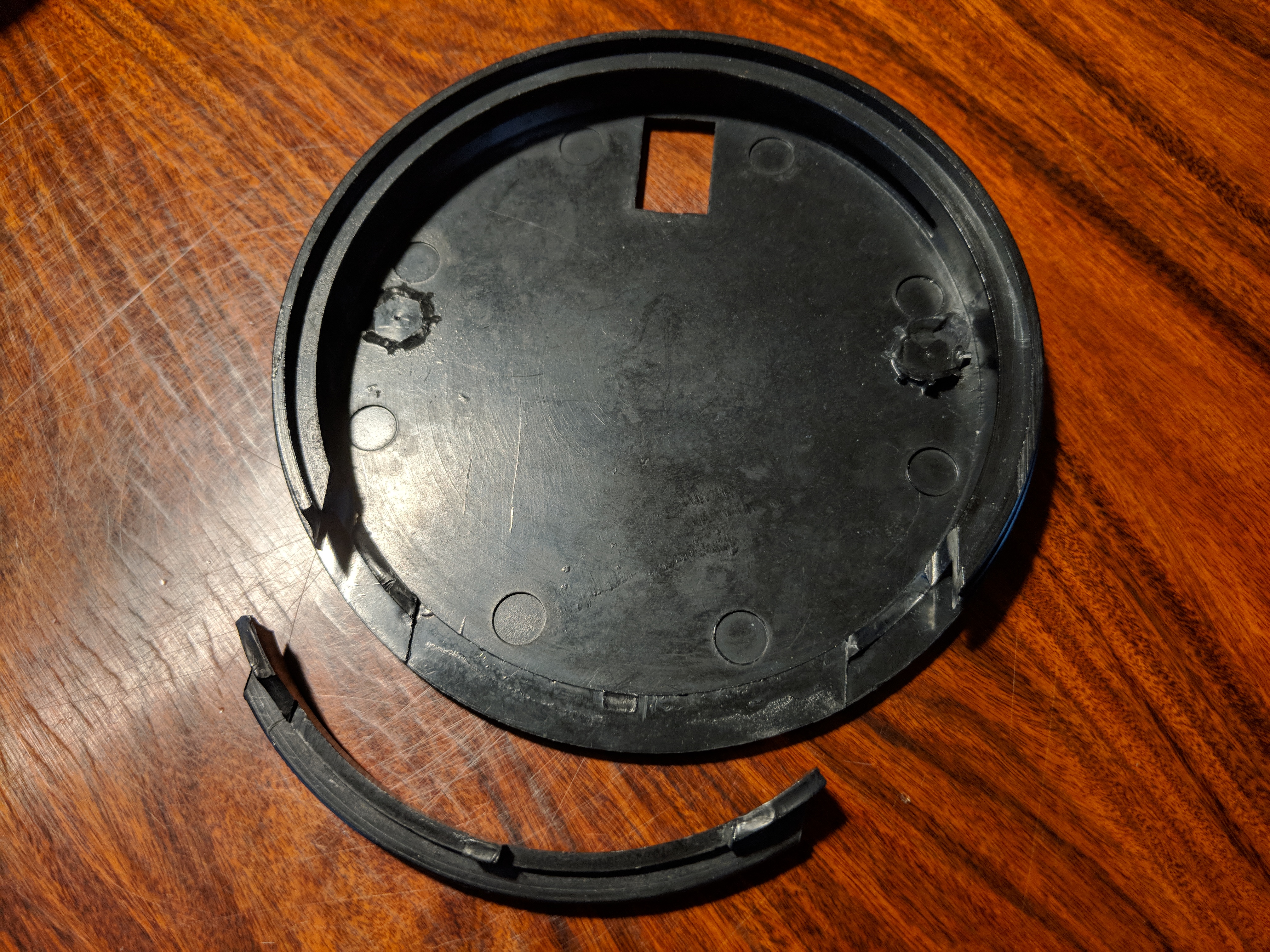 Broken base lid. Note the hex shaped areas - brass nuts were molded in at this location to hold the lid in place. The plastic broke here and the lid was no longer held to the base.
Broken base lid. Note the hex shaped areas - brass nuts were molded in at this location to hold the lid in place. The plastic broke here and the lid was no longer held to the base.
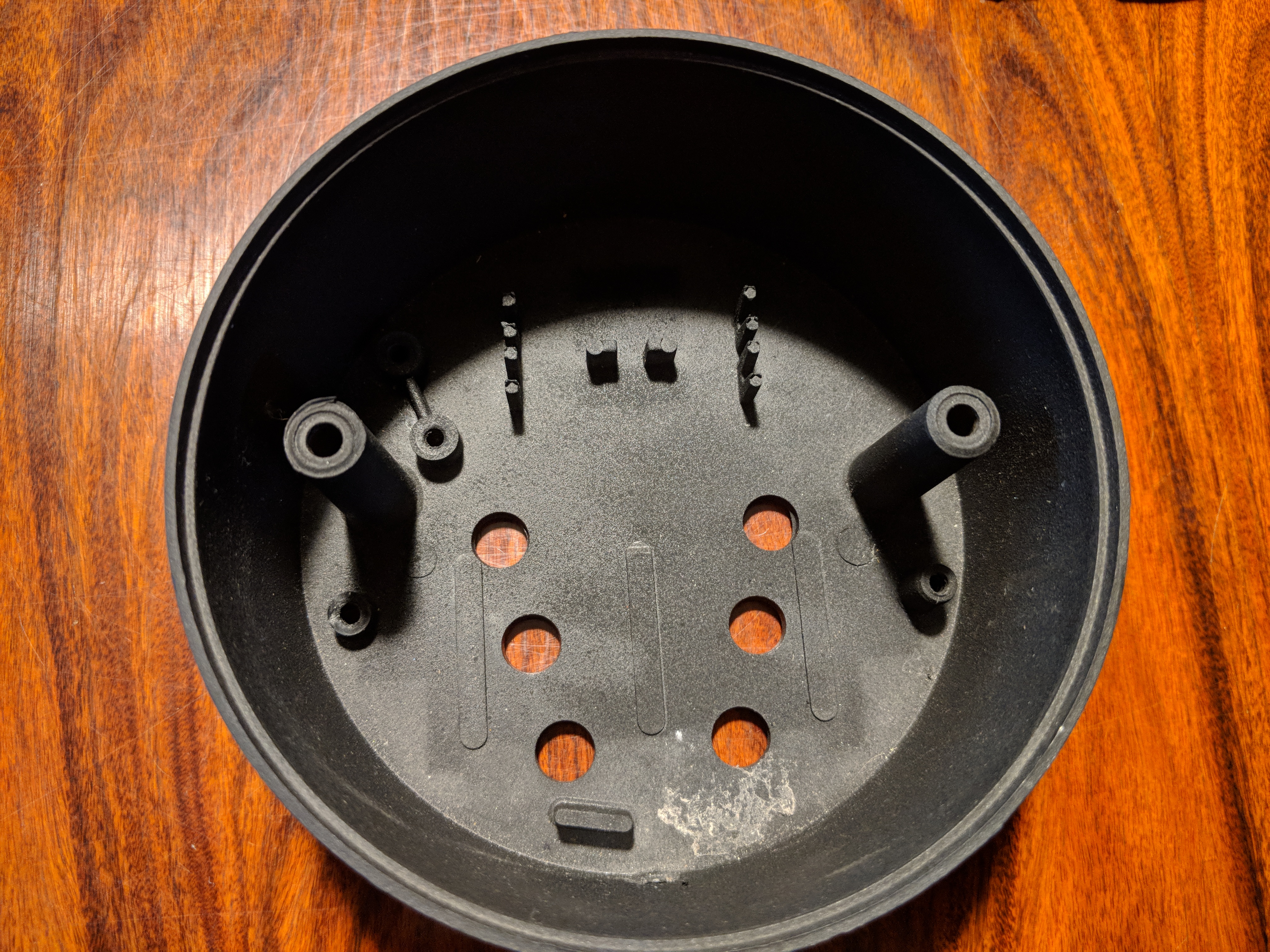 The lower base enclosure is also broken, the short stem on the left which anchors the arm assembly is broken short.
The lower base enclosure is also broken, the short stem on the left which anchors the arm assembly is broken short.
There were two primary challenges to this project. First was learning enough to be able to replicate the design of the parts of the lamp. The premier open source software for doing almost any kind of 3D design work is Blender. Learning Blender as well as general 3D design skills is a significant challenge, so it has taken a number of months for me to get to the point where I thought I could tackle building a new lamp base. Additionally, there are some materials issues. My printer is an FDM (Fused Deposition Modeling) printer. This is a type of printer that is fed a plastic filament and extrudes melted plastic through a heated nozzle. The most commonly used material for FDM is PLA - a plastic that is derived from corn. It is simple to use and the heat products are generally regarded as relatively safe. But PLA is not very strong and it melts at fairly low temperatures. PLA printed objects can soften and warp if left in a hot car interior. There are plenty of choices of filaments to use in a 3D printer. I have experimented with Polycarbonate/ABS alloy. This is a very tough and temperature resistant material, but I did not have much luck printing it and the particles and gasses it emits on heating are pretty noxious. Another filament called nGen, manufactured by the Dutch company colorFabb from Eastman Amphora™ 3300 3D polymer turned out to be a good match for strength, heat resistance, and low emissions.
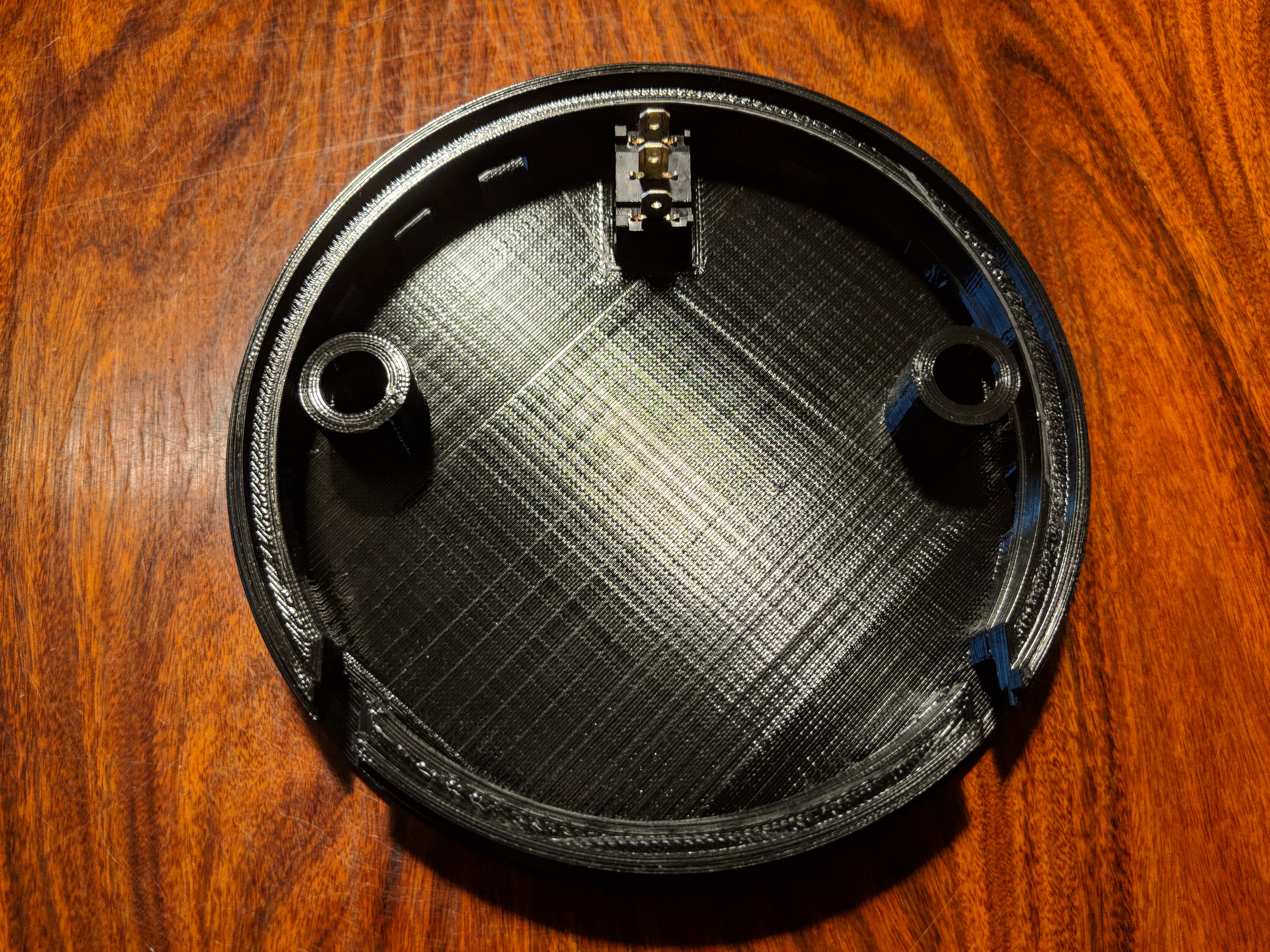 3D printed lid with original switch installed.
3D printed lid with original switch installed.
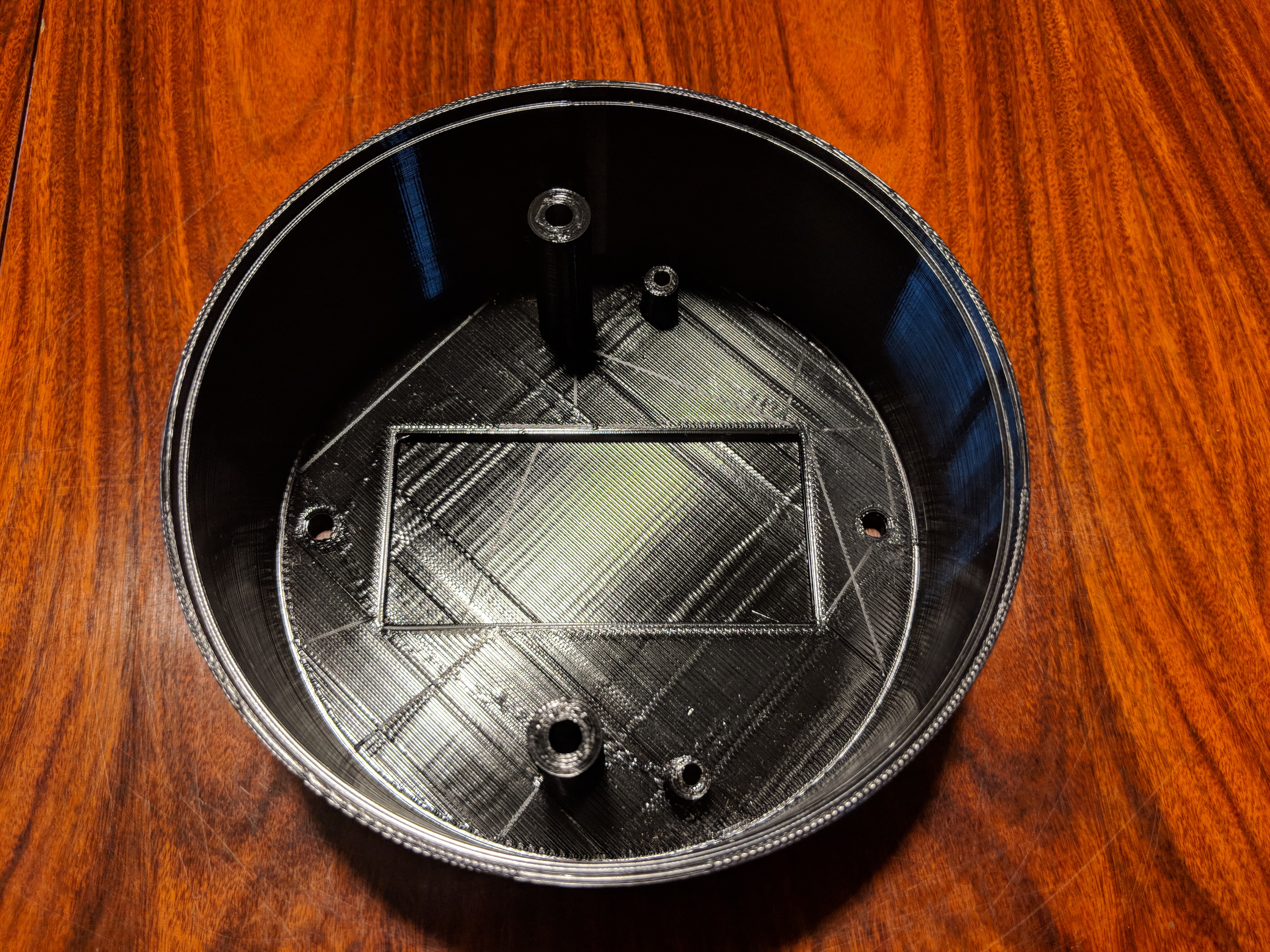 3D printed base with holes and stems for arm assembly, transformer, and lid.
3D printed base with holes and stems for arm assembly, transformer, and lid.
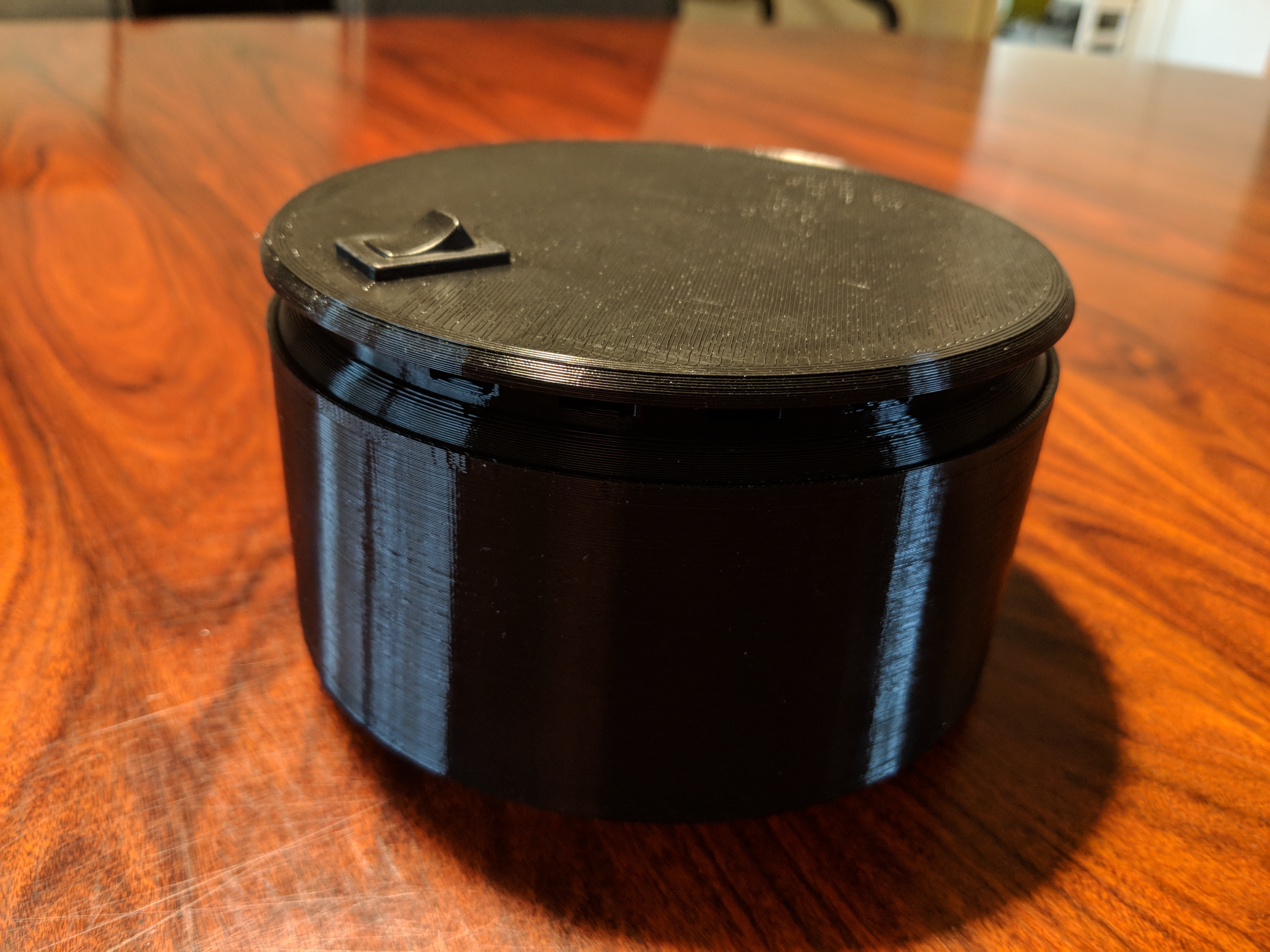 Assembled 3D base and lid. This is unfinished, so the filament layering is visible.
Assembled 3D base and lid. This is unfinished, so the filament layering is visible.
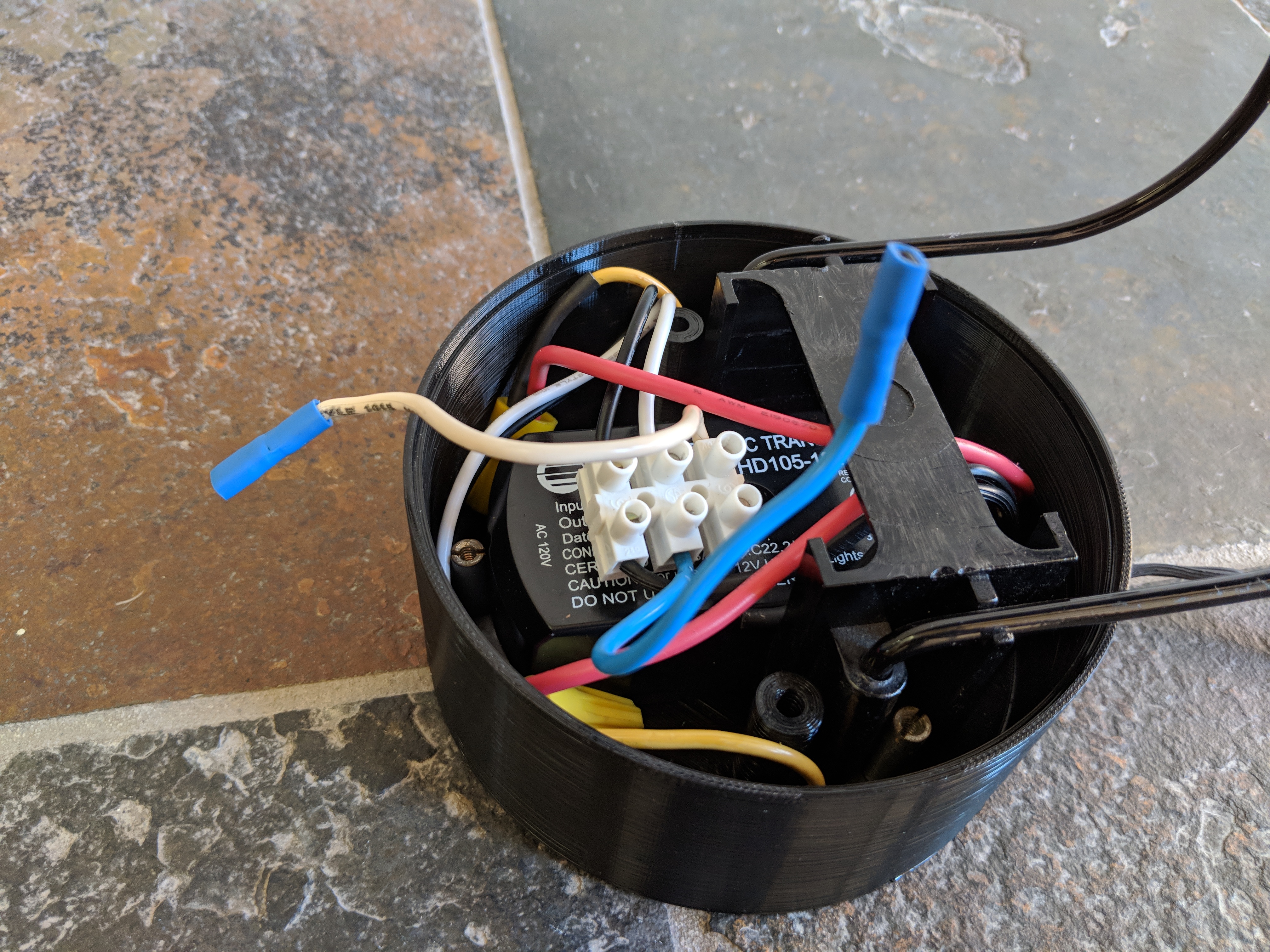 3D base with test install of arm assembly, replacement transformer, and wiring.
3D base with test install of arm assembly, replacement transformer, and wiring.
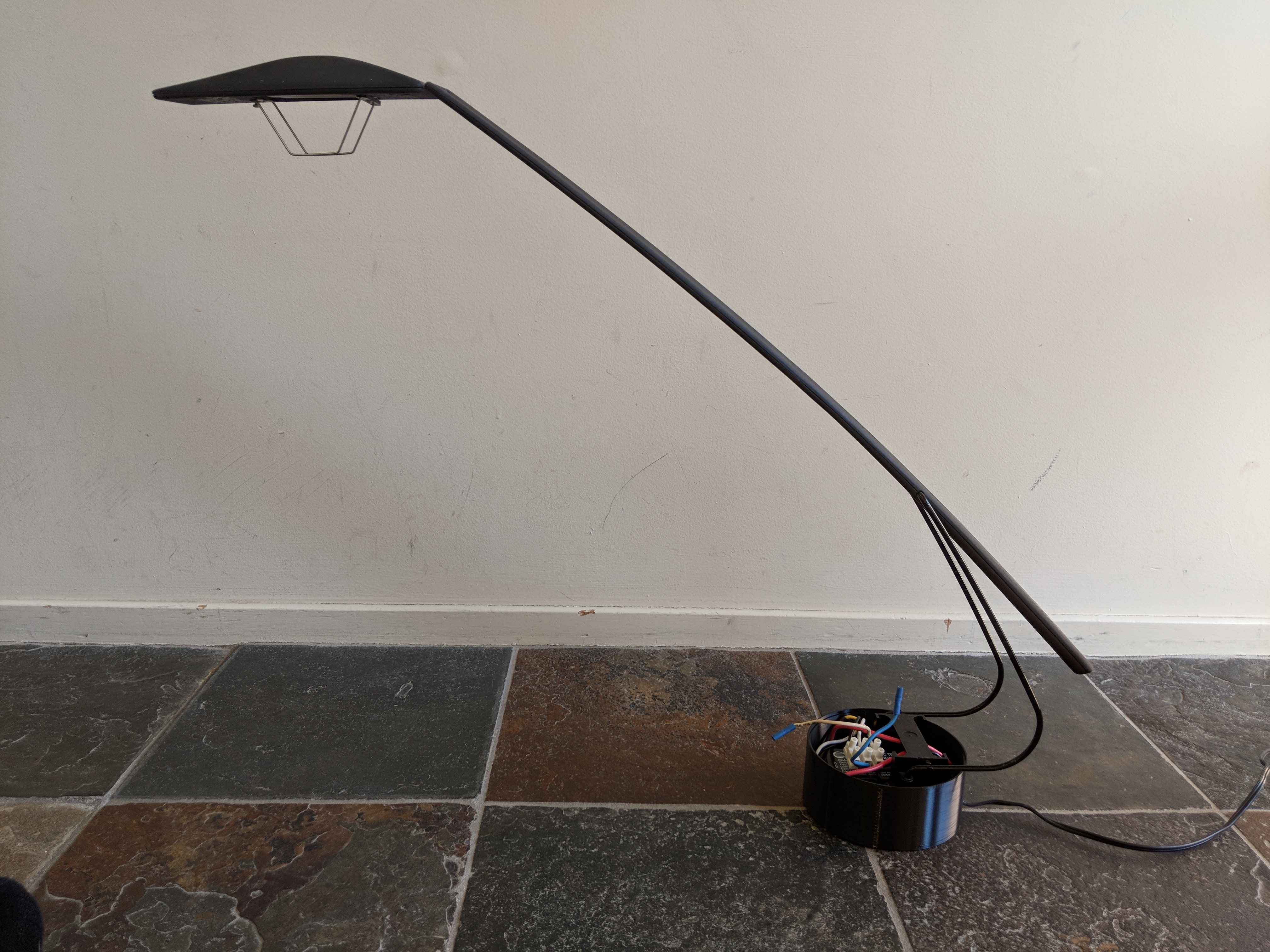 Full view of test assembly.
Full view of test assembly.
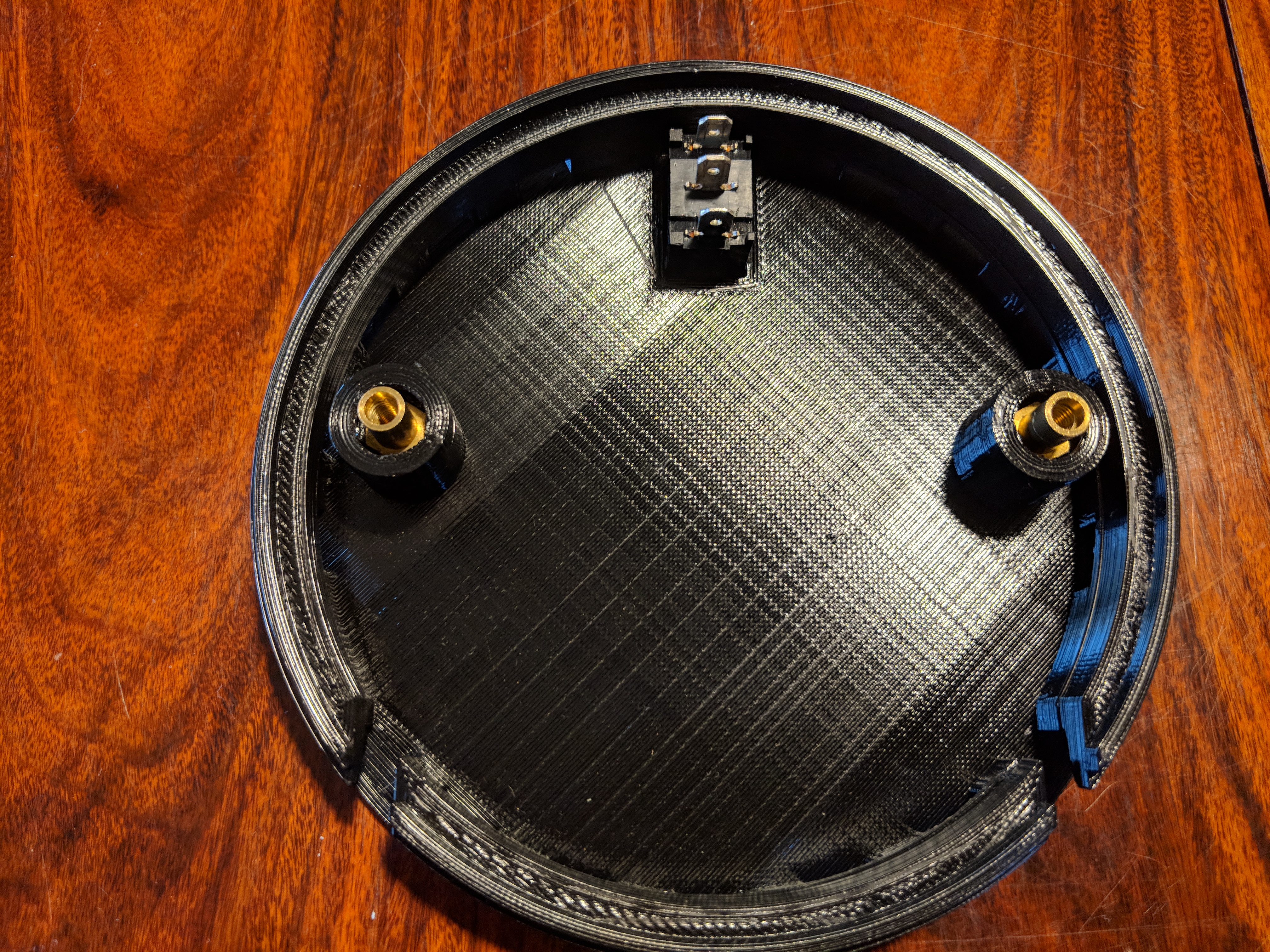 3D printed lid with retaining nuts in place in the hex stems.
3D printed lid with retaining nuts in place in the hex stems.
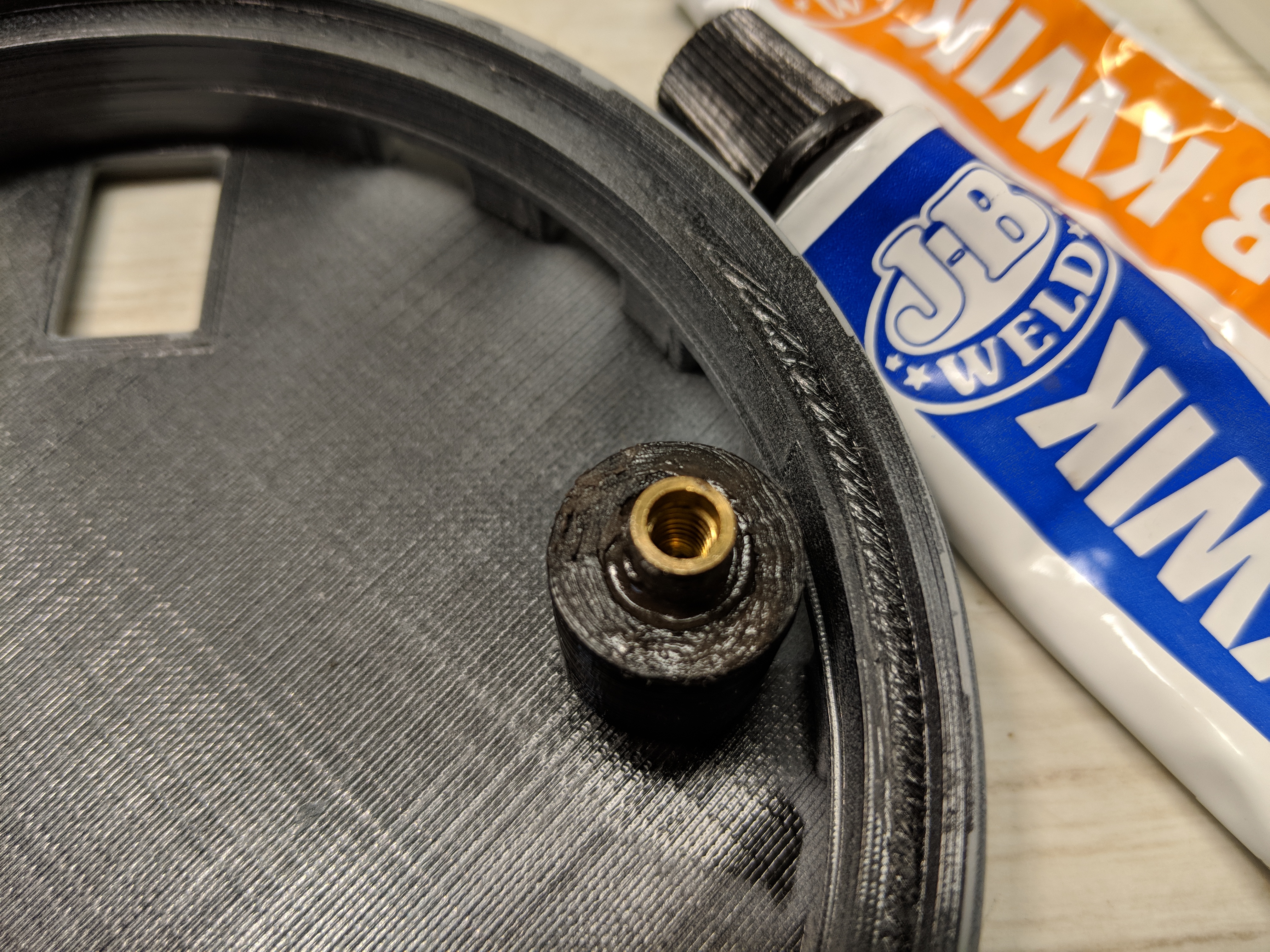 The embedded nuts are held in place by epoxy applied in a cavity in the stem.
The embedded nuts are held in place by epoxy applied in a cavity in the stem.
The printed parts have a visible layering effect, which was not a good look. I wanted the replacement base to look as much like the original as possible, and to match the arm of the lamp. To achieve this, the 3D printed parts were sanded, primed with a filler/primer paint, and finished with flat black paint.
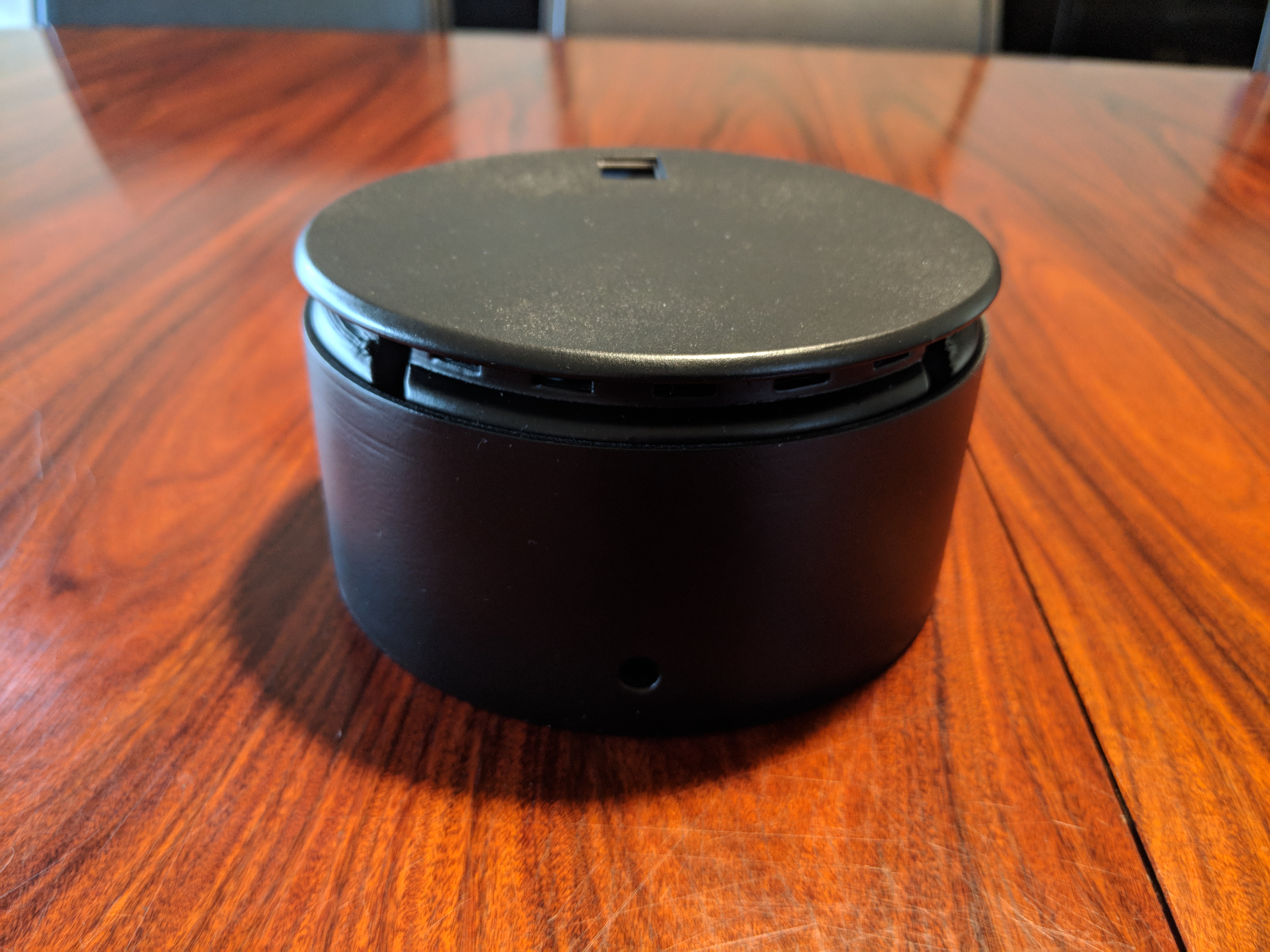 Lid and base after sanding and painting.
Lid and base after sanding and painting.
The 3D printed base is a pretty close match to the original. The only significant difference is that it is a few millimeters larger in diameter and height. The diameter difference is due to the new transformer being a little too long to fit in the original dimensions. The height difference is due to some slight design changes to help the parts print properly. This difference is not noticeable unless you have the original side by side with the replacement. The original base was also quite heavy, due to the construction of the old transformer with large steel plates. The new transformer is much lighter. I am considering installing some weights around the inner perimeter of the base, but it seems pretty stable so far without that addition.
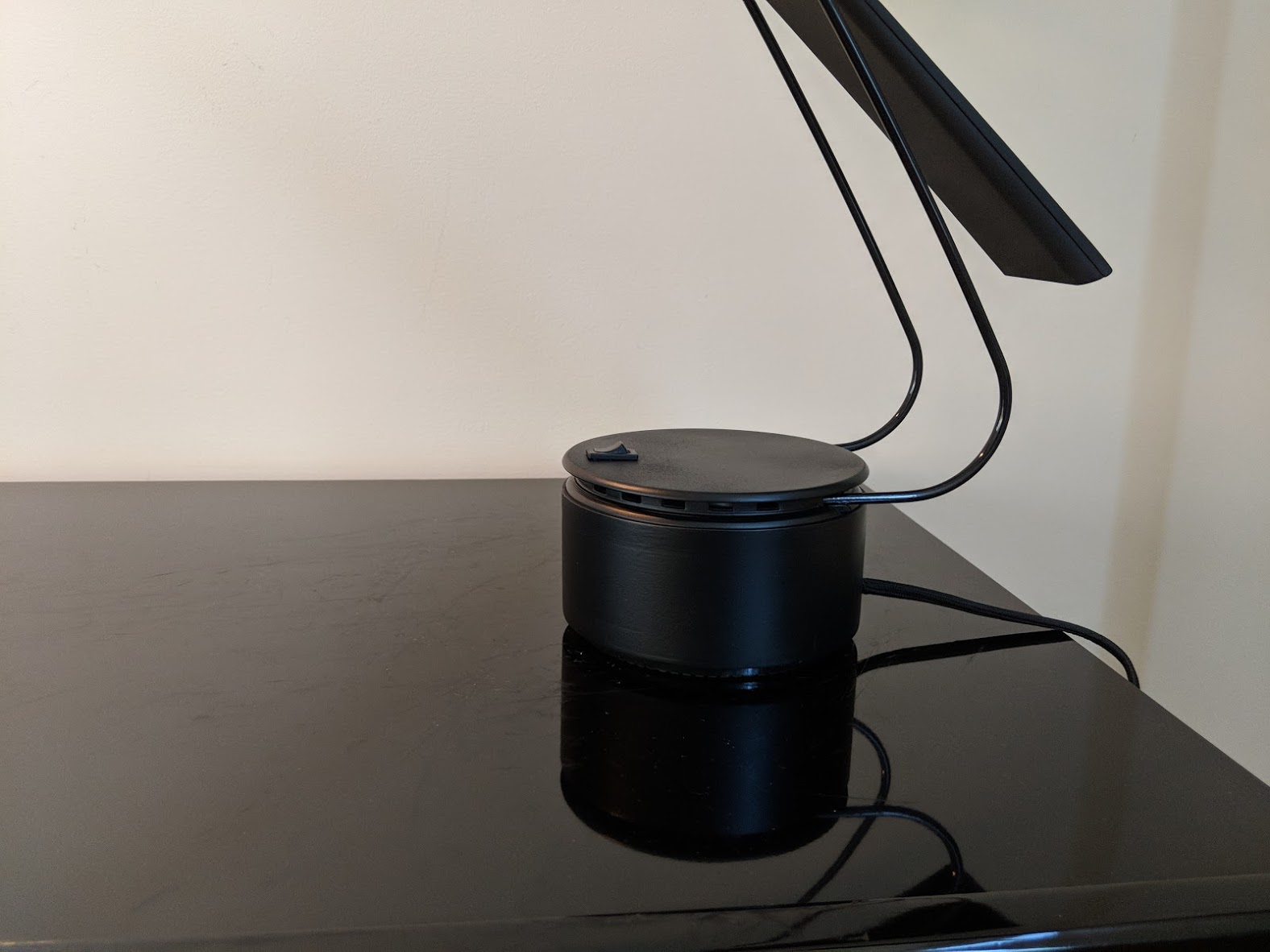 3D printed base fully finished, with all components installed.
3D printed base fully finished, with all components installed.